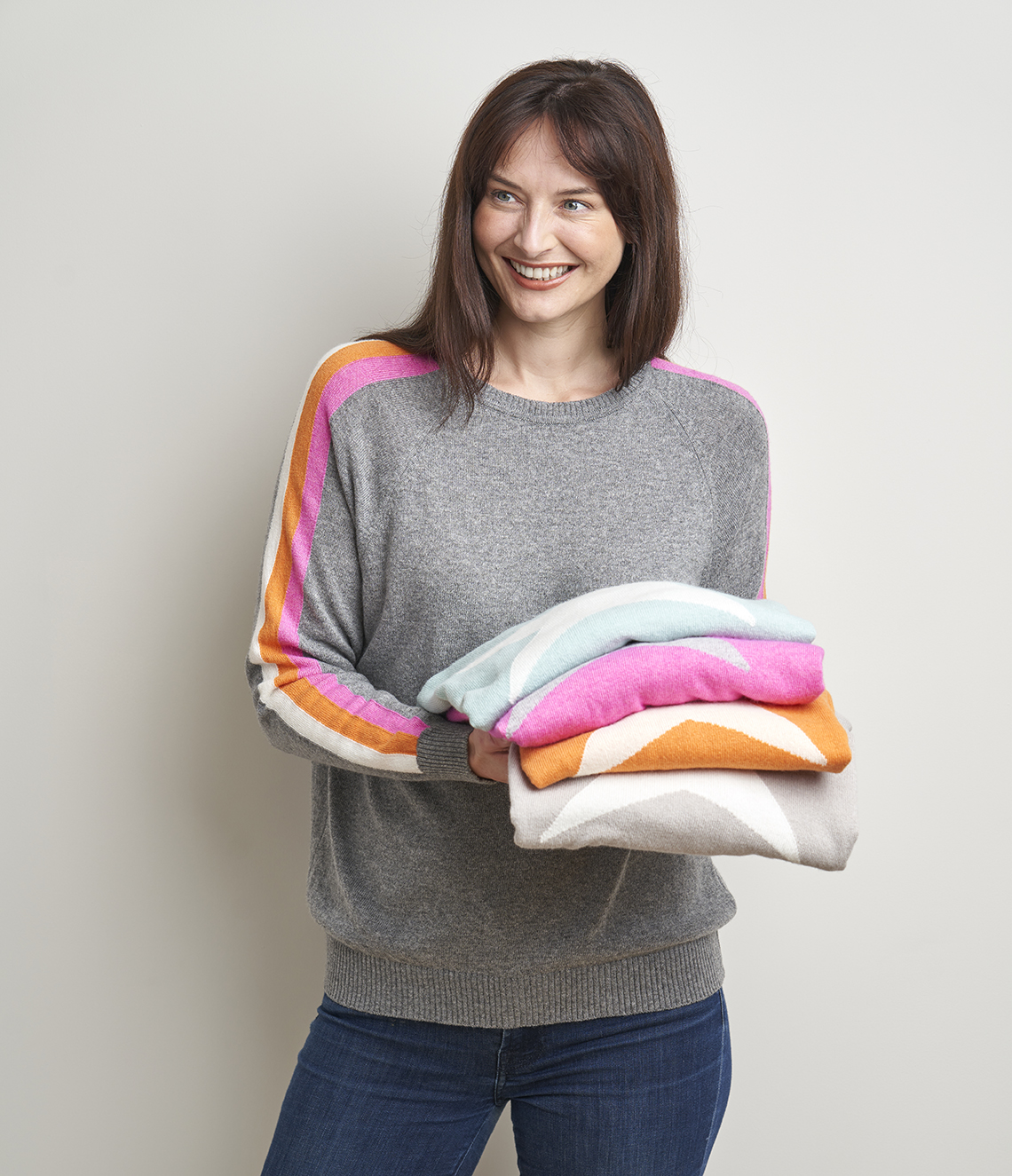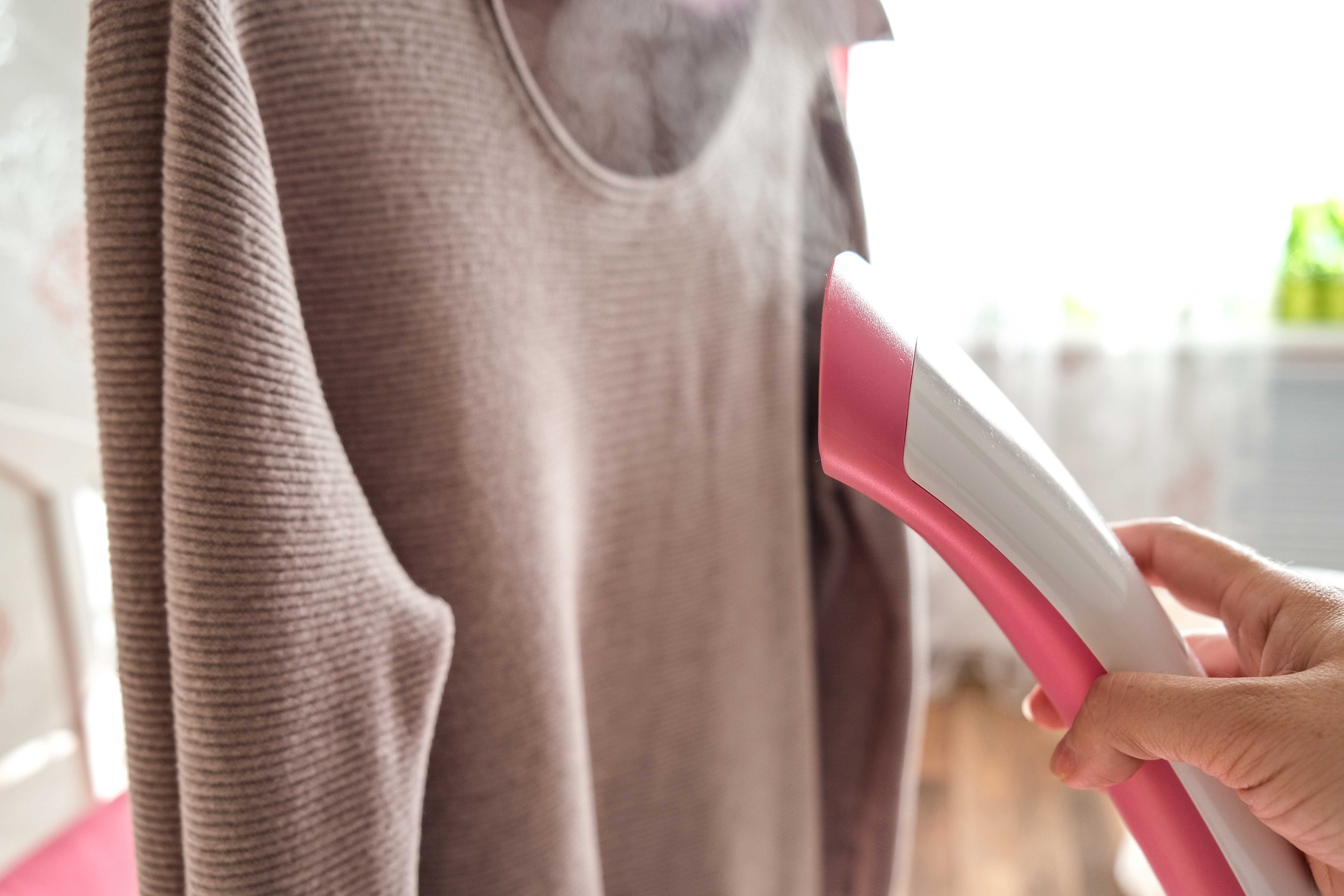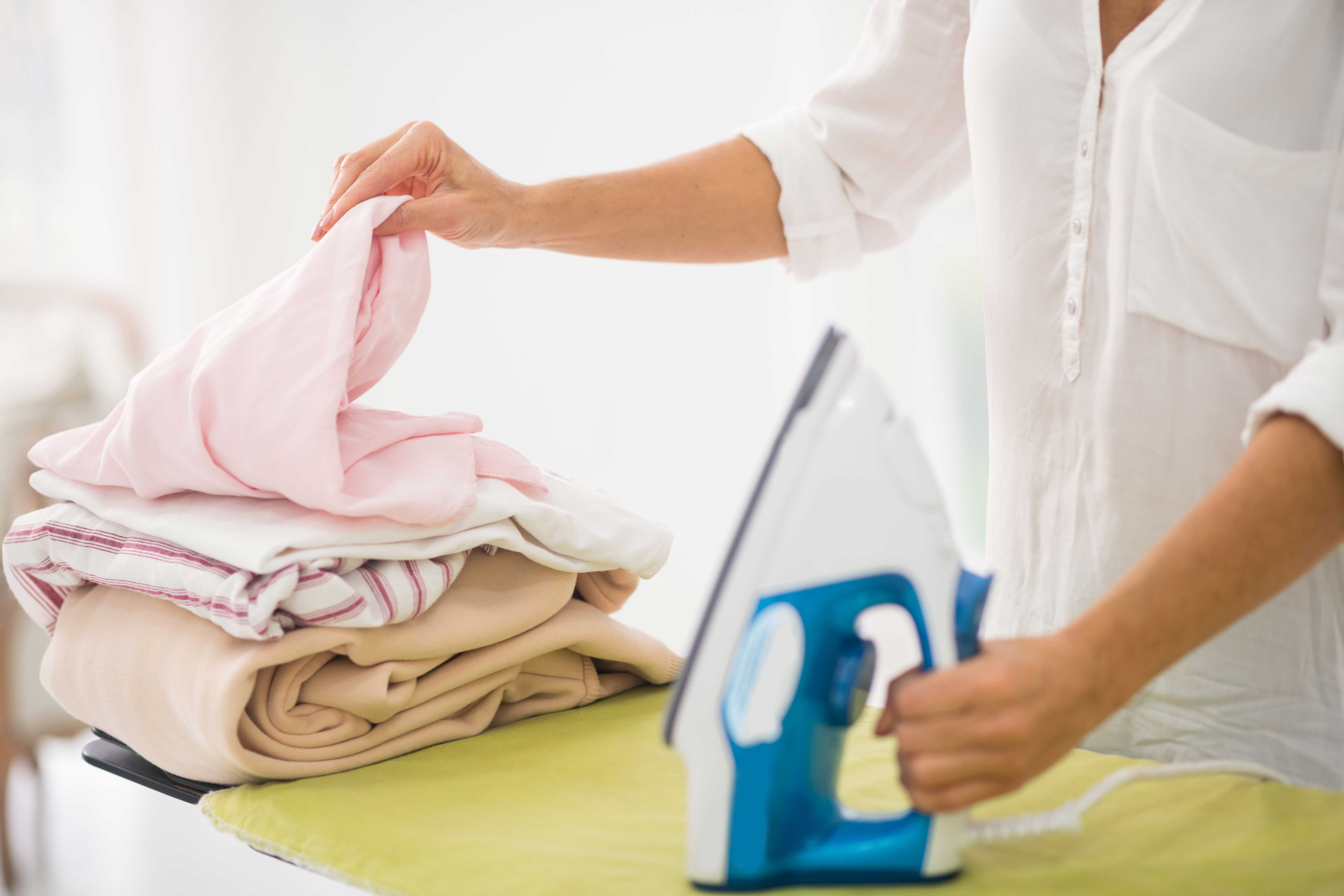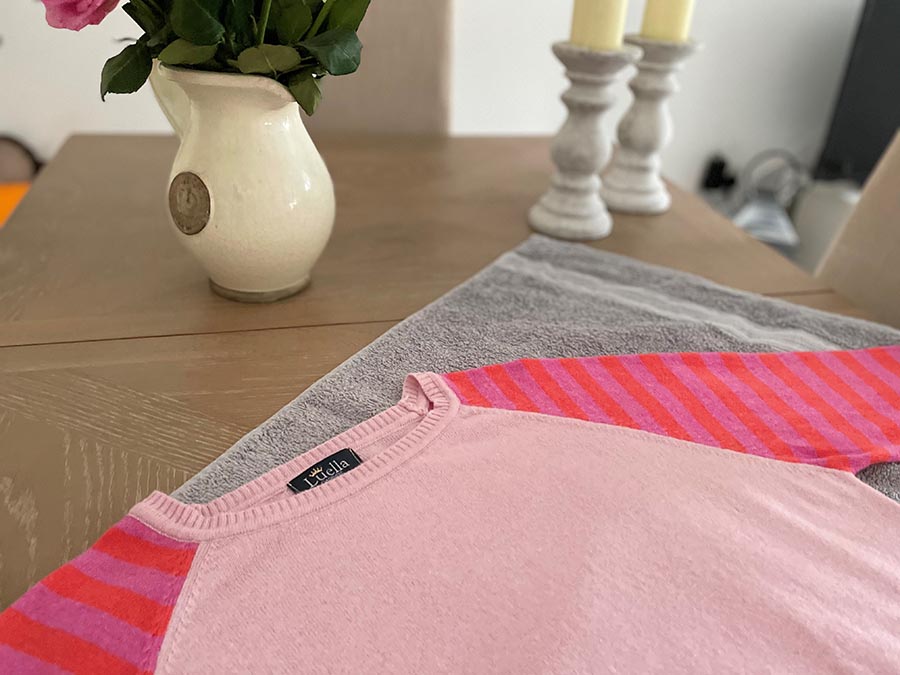 Designed in Great Britain | Made in Italy
Designed in Great Britain | Made in Italy
 + 44 (0) 1454 238940
+ 44 (0) 1454 238940
Cashmere lends all its properties to its delicate structure, which was designed by nature over millennia to keep the goats warm in harsh mountainous environments.
Mother Nature probably overlooked the bit where humans would knit it into fabric and try to flatten it with hot pieces of metal. So just how does cashmere hold up against your iron? Should it never be used? Or are there circumstances when it’s OK? Let’s have a look.

Before we get into the business of ironing, it’s worth pointing out that it’s actually quite hard to crease a well-made piece of cashmere fabric. If you store it as flat as you can, you should never really have to worry about ironing.
And if it must be folded, fold it around another garment – that’s especially apt if it’s in a suitcase. Cashmere will crease if it is tightly screwed up or has folds pressed strongly into it, so just bear that in mind whenever you’re storing it away for the summer or packing it for a holiday (even better, take it in your hand luggage or wear it – it’s breathable and comfy, which is just what you want on a long journey).

If you do get some folds or creases in your favourite cashmere sweater, don’t worry – there are ways to ease some of them out without any physical contact. The one we would recommend is to gently steam the garment with a hand-steamer.
You can do this with it laid flat on a table or hanging on a hanger. Let the steam wisp into the garment at first –you’re not steaming cabbage, so don’t put the nozzle too close and just let the warm, moist air do its work.
You might find this is enough to let the creases relax into a smoother form. If it doesn’t work, just raise the intensity ever so slightly, either by turning up the heat, adjusting the nozzle or moving it closer by degrees. If the crease proves too stubborn when you’re a few inches away, give up this technique for now and move on to ironing.

The watchword when you’re ironing cashmere is “gently”. Treat it like it’s made of wax and would melt if it’s overheated. So first things first – set your iron to the coolest setting it has (it might have a specific wool setting).
Turn the garment inside out and place it flat, then lay a cotton sheet or handkerchief on top of it. Now, iron it through the sheet with your low temperature iron, pressing gently – just glide the iron with its own weight rather than pressing down. The combination of a low temperature, the sheet and ironing the inside surface should give just enough ironing action to remove those more stubborn creases, with practically no chance of damaging the outer surface of your clothing.

There is one final way to iron that some people prefer, and others will use as a last resort if the steam and the gentle iron don’t work.
Essentially it’s the same as the above – inside out garment and a sheet, but this time the sheet has been soaked in water and wrung out so it’s just damp. That means you can turn the iron up just a little bit (a click or two above minimum, but not a hot iron), and iron away. The damp sheet will stop you from damaging the cashmere, as it will act as a heat exchanger, but it will allow you to just raise the temperature a little, which can often be the key to getting a deeply entrenched crease out.

If you’re desperate to get your creased cashmere looking pristine to wear tonight, the above methods are probably your only hope. However, it is worth mentioning that cashmere does tend to settle back to its original shape if it is just left to lie flat, for as long as it needs. That could mean overnight, but it could also be a week or two, depending on the creasing.
We make our cashmere knitwear with a blend of cashmere and merino, as well as a small amount of polyamide, which is a gently elastic fabric that will help your clothing keep its shape. Compared to pure cashmere, it makes it much better at resisting creasing while maintaining cashmere’s characteristic softness, comfort and insulation.
Make sure you’re not making the creasing even worse by overfolding your clothes when you let them rest. The flatter the better, so if you have space to lay a jumper out flat with arms outstretched, do that. Crossing the arms will be fine too – there’s a natural seam there so any slight creasing won’t stand out.
Don’t place other things on top of the clothing, thinking the pressure will flatten it. It probably won’t, as you’re relying on the fibre “unwinding” or returning to its natural position rather than pressing it as such.
So whether you’ve got some deep creases after you’ve badly packed your cashmere knitwear, or you’ve just worn it a little too much around the home and it as folded in unusual places, there should be a solution to returning it to its shop-bought state, whether that’s with some gentle persuasion or just letting gravity and nature do their things.